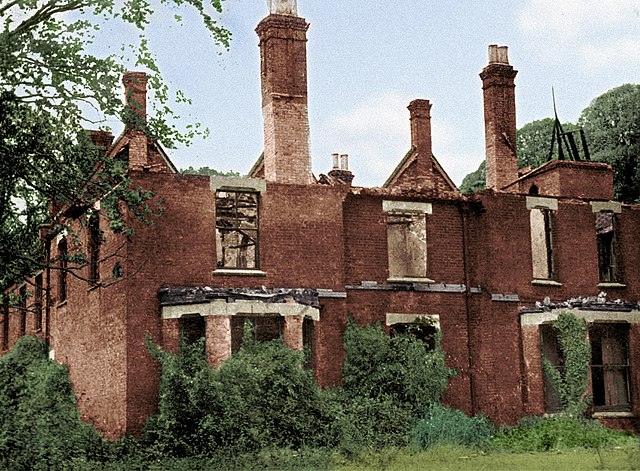Borley Rectory

Hi, my name is Harry Price, I lived from 17 January 1881 – 29 March 1948. I was a British psychic researcher and gained public prominence for investigating psychical phenomena and exposing fraudulent spiritualist mediums. I am best known for the well-publicized investigation of the purportedly haunted Borley Rectory in Essex, England.
The Borley Rectory became known as “the most haunted house in England” after I published a book about it in 1940. I documented a series of alleged hauntings from that time the rectory was built in 1863. I actually lived in the rectory from May 1937 to May 1938 and wrote about my experiences in the book.
The Borley Rectory was constructed near Borley Church by the Reverend Henry Dawson Ellis Bull in 1862, who moved in a year after being named rector of the parish. The house replaced an earlier rectory on the site that had been destroyed by fire in 1841.
The nave of the nearby church dates from the 12th century. According to legend of the Benedictine monastery supposedly built in this area in about 1362, a monk from the monastery had a relationship with a nun from a nearby convent. After their affair was discovered, the monk was executed and the nun bricked up alive in the convent walls. In 1938 it was confirmed that this legend had no historical basis and seemed to have been fabricated by the rector’s children or to be created (or at least exaggerated) by Harry Price.
In March, 1938 Helen Glanville (the daughter of S. J. Glanville) one of my helpers conducted a planchette séance in Streatham in south London. She made contact with two spirits, the first was that of a young nun who identified herself as Marie Lairre. According to the planchette story Marie was a French nun who left her religious order and travelled to England to marry a member of the Waldegrave family, the owners of Borley’s 17th-century manor house, Borley Hall. She was said to have been murdered in an older building on the site of the rectory, and her body either buried in the cellar or thrown into a disused well.Wall writings were alleged to be her pleas for help; one read “Marianne, please help me get out”.
The second spirit to be contacted identified himself as Sunex Amures, who said he would set fire to the rectory at nine o’clock that night, 27 March 1938. He also said that, at that time, the bones of a murdered person would be revealed.
On 27 February 1939 (11 months after the Amures prediction) the new owner of the rectory, Captain W. H. Gregson was unpacking boxes and accidentally knocked over an oil lamp. The fire quickly spread and the house was severely damaged.
The psychical researcher John L. Randall wrote that there was direct evidence of “dirty tricks” played upon me by members of the SPR. On 9 October 1931, a past president of the SPR William Henry Salter visited the Borley Rectory in an attempt to persuade the Rector Lionel Foyster, to sever his links with me and work with the SPR instead. After my death in 1948 Eric Dingwall, Kathleen M. Goldney, and Trevor H. Hall, three members of the Society for Psychical Research, two of whom had been my most loyal associates, investigated my claims about Borley. Their findings were published in a 1956 book, The Haunting of Borley Rectory, which concluded that I had fraudulently produced some of the phenomena.
The “Borley Report”, as the SPR study has become known, stated that many of the phenomena were either faked or due to natural causes such as rats and the strange acoustics attributed to the odd shape of the house. In their conclusion, Dingwall, Goldney, and Hall wrote “when analysed, the evidence for haunting and poltergeist activity for each and every period appears to diminish in force and finally to vanish away.” Terence Hines wrote “Mrs. Marianne Foyster, wife of the Rev. Lionel Foyster who lived at the rectory from 1930 to 1935, was actively engaged in fraudulently creating [haunted] phenomena. They claimed that I “salted the mine” and faked several phenomena while I was at the rectory.”
Robert Hastings, however was one of the few SPR researchers to defend me. My literary executor Paul Tabori and Peter Underwood have also defended me against accusations of fraud. A similar approach was made by Ivan Banks in 1996. Michael Coleman in an SPR report in 1997 wrote that the defenders were unable to rebut the criticisms convincingly.
My investigation of Borley was the subject of a 2013 best selling novel by Neil Spring, titled ‘The Ghost Hunters.’ The novel was subsequently adapted for television named after me, ‘Harry Price: Ghost Hunter,’ starring Rafe Spall, Cara Theobold and Richie Campbell.


Wonderful ARTICLE Harry!!! Come work for me at TEZLA!